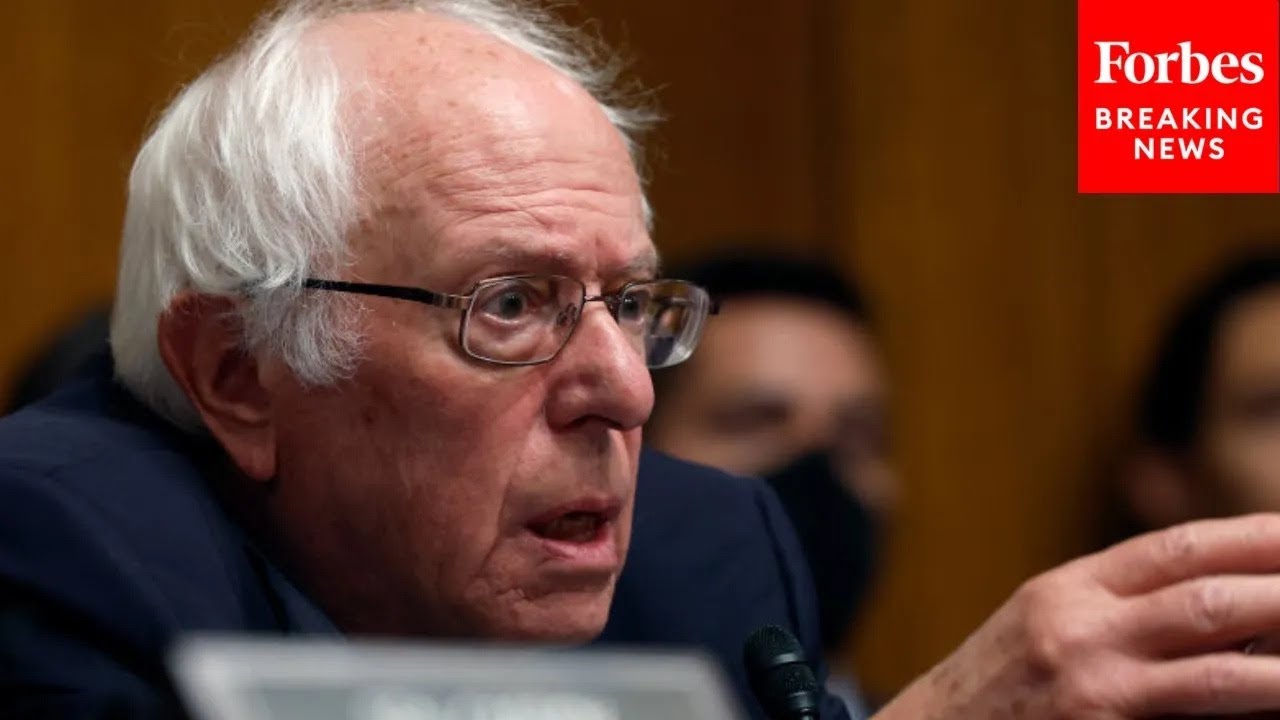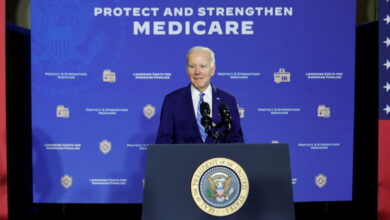
Bernie Sanders Nonprofit Hospitals Charity Care Help Committee
Bernie Sanders Nonprofit Hospitals Charity Care Help Committee: Have you ever wondered about the complexities of healthcare charity care, especially within the framework of non-profit hospitals? This isn’t just about numbers and regulations; it’s about real people facing real financial struggles when they need medical attention. This post dives into Senator Sanders’ long-held beliefs about the role of non-profit hospitals in providing care, exploring the challenges they face, and examining potential solutions for improving access to essential medical services for those who need it most.
We’ll examine Senator Sanders’ specific proposals and actions, comparing his approach to other prominent figures in the political landscape. We’ll then look at the nuts and bolts: successful and unsuccessful charity care programs, the obstacles non-profit hospitals encounter, and potential frameworks for improvement. We’ll also delve into the role of oversight committees, analyzing data to understand the current state of charity care and its impact on hospital finances.
Finally, we’ll explore patient experiences, the need for transparency, and potential pathways towards a more equitable and accountable system.
Bernie Sanders’ Stance on Nonprofit Hospitals
Bernie Sanders has consistently championed a strong regulatory approach towards nonprofit hospitals, arguing that their tax-exempt status comes with a significant social responsibility. He believes these institutions should prioritize community benefit and provide a substantial level of uncompensated care to low-income and uninsured individuals. His stance is rooted in the belief that the public’s tax dollars indirectly support these hospitals, and therefore, they have a moral and ethical obligation to serve the entire community, not just those who can afford to pay.Sanders’ perspective contrasts sharply with the prevailing narrative that often frames nonprofit hospital financial struggles as an inevitable consequence of caring for vulnerable populations.
He argues that these financial difficulties are often a result of prioritizing profits over patient care and community benefit, and that stronger regulations are necessary to ensure accountability.
Legislative Proposals and Actions
Sanders has a long history of advocating for stronger regulations on nonprofit hospitals. While he hasn’t single-handedly passed sweeping legislation on this issue, his influence is evident in various proposals and actions. He has consistently supported legislation aimed at increasing transparency regarding hospital finances, particularly focusing on charity care provisions. This includes pushing for stricter reporting requirements, allowing for better public scrutiny of how nonprofit hospitals allocate their resources and fulfill their community benefit obligations.
For instance, he has been a vocal supporter of bills requiring detailed reporting of charity care provided, along with data on the number of uninsured and underinsured patients treated. This information would be publicly accessible, allowing for independent analysis of the extent to which these institutions are fulfilling their mission.
Comparison with Other Politicians’ Approaches
Compared to other prominent politicians, Sanders’ approach is generally considered more interventionist. While some politicians advocate for market-based solutions or rely on voluntary compliance, Sanders favors stronger government oversight and regulation. For example, he differs from those who argue that tax incentives or other indirect measures are sufficient to encourage charity care. He believes these methods are insufficient to ensure consistent and equitable access to care for all members of the community.
Instead, he advocates for direct regulations, including potential penalties for hospitals that fail to meet specific benchmarks for charity care provision. This proactive stance sets him apart from those who favor a more laissez-faire approach, relying on the self-regulation of nonprofit hospitals or market forces to address issues of access to care. His position often aligns with progressive Democrats who favor stronger government intervention in the healthcare sector to address systemic inequalities.
Nonprofit Hospital Charity Care Practices
Nonprofit hospitals, by their very nature, are expected to provide a significant amount of charity care to underserved populations. This commitment, enshrined in their tax-exempt status, aims to address healthcare disparities and ensure access to essential medical services for those who cannot afford them. However, the reality of implementing and maintaining effective charity care programs is complex and fraught with challenges.
The effectiveness of these programs varies widely, depending on factors such as hospital size, community needs, and available resources.
Successful and Unsuccessful Charity Care Programs
Successful charity care programs often involve a multifaceted approach. For example, some hospitals have implemented robust financial assistance programs that go beyond simply writing off unpaid bills. These programs often include streamlined application processes, patient navigators to guide patients through the system, and collaborations with community organizations to identify and reach vulnerable populations. A successful example might be a hospital that partners with local social service agencies to proactively screen patients for financial need and connect them with resources like Medicaid enrollment assistance or prescription drug discount programs.
Conversely, unsuccessful programs frequently suffer from opaque application processes, inadequate staffing to manage applications, and a lack of communication with patients, leading to low utilization and unmet needs. A hospital might have a charity care policy on paper, but if it’s buried in dense legal language and requires extensive documentation, few patients will successfully access it.
Challenges in Providing Adequate Charity Care
Nonprofit hospitals face numerous hurdles in delivering adequate charity care. Financial constraints are a major obstacle. While these hospitals benefit from tax exemptions, they still operate under significant financial pressures, balancing the costs of providing care with the need to maintain financial stability. The rising cost of healthcare, coupled with decreased reimbursement rates from government and private insurers, further exacerbates this challenge.
Additionally, many hospitals struggle to accurately assess patient need, leading to either under- or over-provision of charity care. Accurate and timely data on patient financial situations is often lacking, making it difficult to allocate resources effectively. Finally, a lack of awareness among eligible patients about available charity care options represents a significant barrier to access.
A Framework for Improved Charity Care Delivery
An improved framework for charity care should prioritize transparency and accessibility. This could involve a user-friendly, easily accessible online application for financial assistance, coupled with multilingual support and patient navigators who can assist with the application process. Hospitals should also proactively identify and reach out to patients who are likely to be eligible for charity care, potentially through electronic health record screening and integration with social service agencies.
To address financial constraints, hospitals could explore innovative funding models, such as community fundraising initiatives or partnerships with philanthropic organizations. Furthermore, a robust data collection and analysis system is crucial for tracking program effectiveness, identifying areas for improvement, and justifying the allocation of resources to charity care initiatives. A key element would be establishing clear and consistent criteria for determining eligibility, ensuring equitable access to care regardless of race, ethnicity, or immigration status.
Bernie Sanders’ advocacy for nonprofit hospitals providing robust charity care is crucial, especially considering the current healthcare landscape. The recent new york state nurse strike NYSNA Montefiore Mount Sinai highlights the urgent need for improved staffing and resources in these very institutions, underscoring the importance of Sanders’ committee’s work in ensuring accessible and quality care for all.
For example, a sliding scale based on income and family size could ensure fair allocation of resources. Finally, regular audits and transparency reports could demonstrate the hospital’s commitment to fulfilling its charitable mission.
The Role of Committees in Overseeing Charity Care
Nonprofit hospitals, while enjoying tax-exempt status, are expected to provide a significant amount of charity care to their communities. Overseeing and ensuring compliance with these obligations often falls to various committees at the local, state, and federal levels. These committees play a crucial role in maintaining transparency and accountability within the healthcare system. Their actions directly impact the accessibility and availability of vital medical services for vulnerable populations.
Hospital Governing Boards and Charity Care Oversight
Hospital governing boards, composed of community members, medical professionals, and administrators, are the primary overseers of charity care within individual hospitals. They are responsible for establishing policies regarding financial assistance, eligibility criteria for charity care, and methods for tracking and reporting charity care provided. These boards review financial reports that detail the amount of charity care offered, comparing it against the hospital’s overall financial performance and community needs.
A board’s failure to adequately oversee charity care can lead to scrutiny from regulatory bodies and potential legal challenges. For example, a board might be challenged if it prioritizes profit maximization over providing sufficient charity care, especially if the hospital demonstrates significant financial surpluses.
Bernie Sanders’ push for nonprofit hospitals to expand charity care got me thinking about how technology can help. Improving data management and patient access is crucial, and that’s where innovations like google cloud healthcare amy waldron generative AI come in. Imagine the potential for streamlining processes and identifying those most in need of Bernie Sanders’ championed charity care – a real game-changer for efficient resource allocation.
State Attorney General Offices and Nonprofit Hospital Regulation
State Attorney General offices have a significant role in regulating nonprofit hospitals, including their charity care practices. Many states have laws requiring nonprofit hospitals to submit annual reports detailing their charity care activities. These reports are reviewed by the Attorney General’s office to ensure compliance with state regulations and to identify potential violations. The Attorney General can initiate investigations and legal actions against hospitals that fail to meet their charity care obligations.
For instance, a state Attorney General might investigate a hospital if community complaints suggest a lack of transparency or inequitable access to charity care based on factors like race or socioeconomic status. The investigation could lead to corrective actions, fines, or even the revocation of the hospital’s tax-exempt status.
Federal Agencies and Tax Exemption Compliance
At the federal level, the Internal Revenue Service (IRS) oversees the tax-exempt status of nonprofit hospitals. While the IRS doesn’t directly regulate charity care provision, it does scrutinize hospitals’ compliance with their community benefit obligations, which includes charity care. Hospitals must demonstrate that they are actively working to fulfill their mission of serving the community, and charity care is a key component of this demonstration.
The IRS can revoke a hospital’s tax-exempt status if it determines that the hospital is not meeting its community benefit obligations, including providing an adequate level of charity care, and this can result in significant financial repercussions for the institution. For example, if an IRS audit reveals a significant discrepancy between a hospital’s stated commitment to charity care and its actual provision, the IRS might impose penalties or even revoke the hospital’s tax-exempt status.
Data Analysis of Nonprofit Hospital Charity Care

Source: fortune.com
Analyzing charity care data from nonprofit hospitals is crucial for understanding their commitment to community health and identifying potential disparities in access to care. This analysis requires a multifaceted approach, encompassing data collection, interpretation, and comparison across various metrics. The following sections delve into specific aspects of this important process.
State-Level Charity Care Data
The following table presents hypothetical data illustrating the variation in charity care provided by nonprofit hospitals across different states. Note that this is illustrative data and does not reflect actual figures. Real-world data collection would require access to comprehensive state-level databases maintained by health regulatory bodies. Accurate data is critical for effective policy-making and resource allocation.
| State | Number of Hospitals | Total Charity Care Dollars (USD) | Percentage of Patients Receiving Charity Care |
|---|---|---|---|
| California | 200 | 500,000,000 | 15% |
| Texas | 150 | 300,000,000 | 12% |
| New York | 180 | 450,000,000 | 18% |
| Florida | 120 | 200,000,000 | 10% |
Correlation Between Hospital Size/Revenue and Charity Care
Understanding the relationship between hospital size or revenue and the amount of charity care provided is essential for assessing the financial capacity of hospitals to offer such services. Several potential correlations exist, which warrant further investigation.
The following bullet points Artikel potential correlations, which should be verified using rigorous statistical analysis of real-world data:
- Positive Correlation: Larger hospitals with higher revenues may provide a greater amount of charity care due to their increased financial capacity. For example, a large teaching hospital in a major city might have significantly more resources to dedicate to uncompensated care compared to a smaller rural hospital.
- No Correlation: Hospital size or revenue may not be directly correlated with charity care. Factors like hospital mission, community demographics, and management decisions may play a more significant role.
- Negative Correlation (in some cases): In some instances, very large, for-profit hospital systems might prioritize profit maximization, potentially leading to a lower percentage of charity care compared to smaller, mission-driven nonprofit hospitals.
Effectiveness of Charity Care Data Tracking and Reporting Methods, Bernie sanders nonprofit hospitals charity care help committee
Different nonprofit hospitals employ various methods for tracking and reporting charity care data. The effectiveness of these methods varies depending on factors such as data accuracy, transparency, and consistency.
A comparative analysis of different methods is crucial to identify best practices and ensure accurate reporting of charity care. This would involve reviewing existing hospital policies and procedures, auditing data collection processes, and assessing the reliability of reported figures. A standardized reporting framework, perhaps developed by a national organization, could improve data comparability and transparency.
Impact of Charity Care on Nonprofit Hospital Finances

Source: ytimg.com
Providing charity care is a cornerstone of the nonprofit hospital mission, reflecting a commitment to community health and serving vulnerable populations. However, this commitment presents significant financial challenges, requiring careful management and strategic planning to ensure long-term sustainability. The delicate balance between fulfilling their charitable mission and maintaining financial viability is a constant concern for nonprofit hospitals.The provision of uncompensated care directly reduces a hospital’s revenue.
Bernie Sanders’ push for nonprofit hospitals to expand charity care is a crucial conversation, especially considering the for-profit healthcare landscape. News that Walgreens, a major player, is raising its healthcare segment outlook following the Summit acquisition, as reported in this article , highlights the complexities involved. This raises questions about how increased profits might affect the availability of affordable care and the need for stronger advocacy like Sanders’ committee.
This lost revenue impacts the hospital’s ability to invest in infrastructure improvements, recruit and retain qualified staff, and adopt cutting-edge medical technologies. The financial strain can be particularly acute for hospitals serving communities with high rates of poverty and uninsured individuals, where the demand for charity care is often greatest. This can lead to reduced services, longer wait times, and potentially compromise the quality of care provided to all patients.
Financial Strategies for Balancing Charity Care and Sustainability
Nonprofit hospitals employ a variety of strategies to mitigate the financial impact of charity care while upholding their commitment to community service. These strategies often involve a combination of approaches aimed at increasing revenue, reducing costs, and securing external funding.One key strategy is efficient cost management. This includes streamlining administrative processes, negotiating favorable contracts with suppliers, and implementing cost-effective technologies.
Hospitals may also explore innovative payment models, such as value-based care, which incentivize high-quality, cost-effective care. Furthermore, robust fundraising efforts, including grants, donations, and community outreach programs, play a vital role in supplementing revenue and offsetting the costs of charity care. Finally, many hospitals actively engage in community health initiatives to prevent illness and promote wellness, thereby reducing the overall need for expensive medical interventions in the long run.
Hypothetical Scenario: Maximizing Profit vs. Charity Care
Imagine a hypothetical nonprofit hospital, “Hopewell Hospital,” serving a diverse community with a significant uninsured population. Hopewell faces a choice: either significantly reduce its charity care provision to increase profitability and reinvest in new equipment, or maintain its current level of charity care, potentially jeopardizing its financial stability. If Hopewell chooses to maximize profit by drastically cutting charity care, it could invest in a new state-of-the-art MRI machine, significantly improving diagnostic capabilities and attracting more paying patients.
However, this decision would likely result in a significant number of uninsured and underinsured patients being unable to access necessary care. Conversely, maintaining its current level of charity care would mean Hopewell may struggle to replace aging equipment, potentially leading to decreased efficiency and a decline in the quality of care offered to all patients, even those with insurance.
This decision illustrates the complex trade-offs involved in balancing financial sustainability with the ethical obligation to provide charity care. The optimal balance requires careful consideration of the hospital’s mission, community needs, and long-term financial viability.
Patient Perspectives on Access to Charity Care

Source: jacobinmag.com
Navigating the complex world of charity care at nonprofit hospitals can be a daunting experience for patients already facing significant health challenges and financial strain. Understanding the perspectives of those who have sought, or attempted to seek, this assistance is crucial to evaluating the effectiveness and equity of current systems. This section presents narratives from patients, highlighting common barriers and the impact on their health and financial well-being.
Patient Narratives Illustrating Challenges in Accessing Charity Care
The following accounts illustrate the difficulties patients encounter when attempting to access charity care. These experiences underscore the need for clearer, more accessible application processes and greater transparency regarding eligibility criteria.
“I spent weeks filling out paperwork for charity care, only to be denied because my income was $50 above the cutoff. It felt like a cruel joke. I ended up having to sell my car to pay the bill.”
Maria R., a single mother with a chronic illness.
“The application process was so confusing. I had to gather so many documents, and the hospital staff weren’t very helpful in guiding me through it. I eventually gave up, and now I’m drowning in medical debt.”
John S., a construction worker injured on the job.
“I was told I qualified for financial assistance, but the amount they offered barely covered a fraction of my bill. I’m still struggling to pay off the remaining balance.”
Sarah L., a teacher diagnosed with cancer.
Common Barriers to Accessing Charity Care
Several recurring themes emerge from patient accounts regarding barriers to accessing charity care. These obstacles often compound the stress and anxiety associated with illness.The application process itself is frequently cited as a major hurdle. Complex forms, extensive documentation requirements, and unclear eligibility criteria create significant challenges for patients already grappling with health issues. Many patients lack the necessary resources or support to navigate this intricate process.
Additionally, a lack of clear communication and insufficient staff support can further exacerbate the difficulties patients face. Finally, the fear of rejection and the stigma associated with seeking financial assistance can deter individuals from even applying.
Impact of Charity Care Access (or Lack Thereof) on Patient Health and Finances
The availability or unavailability of charity care significantly impacts patients’ health outcomes and financial well-being. Lack of access forces many individuals to delay or forgo necessary medical care, leading to worsening health conditions and increased long-term costs. The resulting medical debt can lead to financial ruin, impacting not only the patient but their entire family. Conversely, access to charity care can alleviate significant financial burdens, enabling patients to focus on their recovery and improving their overall quality of life.
For example, Maria R.’s need to sell her car to cover medical expenses highlights the devastating financial consequences of inadequate charity care programs. Similarly, John S.’s experience underscores the complexities of navigating the application process and the potential for discouragement and subsequent forgoing of necessary care. Sarah L.’s case illustrates the limitations of financial assistance, often leaving patients with substantial remaining debt.
Potential for Improved Transparency and Accountability
Nonprofit hospitals, entrusted with the public’s health and often receiving significant tax benefits, face increasing scrutiny regarding their charity care practices. A lack of standardized reporting and inconsistent application of charity care policies across institutions create challenges in assessing their true commitment to serving underserved populations. Improving transparency and accountability is crucial to ensuring that these hospitals fulfill their public benefit mission.The current system of charity care reporting is fragmented and lacks uniformity.
This makes it difficult to compare performance across different hospitals and track national trends. A standardized, publicly accessible database, incorporating key metrics like the number of patients receiving charity care, the value of that care, and the criteria used for eligibility determination, would significantly improve transparency. This database should be regularly audited by an independent body to ensure data accuracy and integrity.
A Standardized Reporting System for Charity Care
A standardized reporting system should be implemented, mandating consistent data collection and reporting across all nonprofit hospitals. This system should include specific definitions for key terms like “charity care,” “financial assistance,” and “uncompensated care,” preventing ambiguity and facilitating meaningful comparisons. The reporting should be detailed enough to allow for analysis of charity care provision by patient demographics, diagnoses, and types of services.
Hospitals should be required to publicly report this data annually, making it easily accessible to the public and researchers. Penalties for non-compliance, including potential loss of tax-exempt status, would incentivize adherence.
Ethical Considerations in Charity Care Provision
Ethical considerations in charity care provision extend beyond simply providing services to those in need. They encompass fair resource allocation, equitable access, and the avoidance of discriminatory practices. For example, a hospital may need to balance providing charity care with its financial sustainability. This necessitates careful planning and resource management, ensuring that the provision of charity care doesn’t compromise the quality of care for all patients.
Transparency in how these decisions are made is crucial to maintain public trust. Independent ethics boards, with representation from community members and patient advocates, could provide valuable oversight and guidance.
Enhancing Public Oversight of Nonprofit Hospital Charity Care
Strengthening public oversight requires a multi-pronged approach. In addition to the standardized reporting system, independent audits of hospital financial records should be conducted to verify the accuracy of reported charity care data and assess the overall financial health of the institution in relation to its charity care provision. Government agencies should have increased authority to investigate complaints of unfair or discriminatory charity care practices.
Furthermore, public forums and community engagement initiatives can provide opportunities for stakeholders to express their concerns and provide feedback on hospital charity care practices. This could involve public hearings, online platforms for feedback, and collaborations with community organizations representing vulnerable populations.
Final Review: Bernie Sanders Nonprofit Hospitals Charity Care Help Committee
Ultimately, the Bernie Sanders Nonprofit Hospitals Charity Care Help Committee highlights a critical issue: the ethical and financial tightrope non-profit hospitals walk when balancing their mission of providing care with the realities of maintaining financial stability. While there are challenges, the potential for improvement is significant. By fostering greater transparency, accountability, and innovative solutions, we can work towards a future where access to quality healthcare isn’t determined by a patient’s ability to pay.
This is a conversation that deserves continued attention and proactive engagement from all stakeholders.
FAQ Resource
What specific legislative actions has Bernie Sanders taken regarding nonprofit hospital charity care?
While a comprehensive list requires extensive research beyond this post’s scope, his public statements and proposed legislation consistently advocate for stronger regulations and increased transparency regarding charity care provision by non-profit hospitals.
How does Sanders’ approach compare to other politicians?
This varies widely depending on the politician. Some support stronger regulations and increased oversight, while others prioritize market-based solutions or argue for less government intervention. A direct comparison requires a detailed analysis of individual political stances.
What are some examples of common barriers patients face in accessing charity care?
Common barriers include complex application processes, insufficient financial assistance, lack of awareness about available programs, and discriminatory practices.





